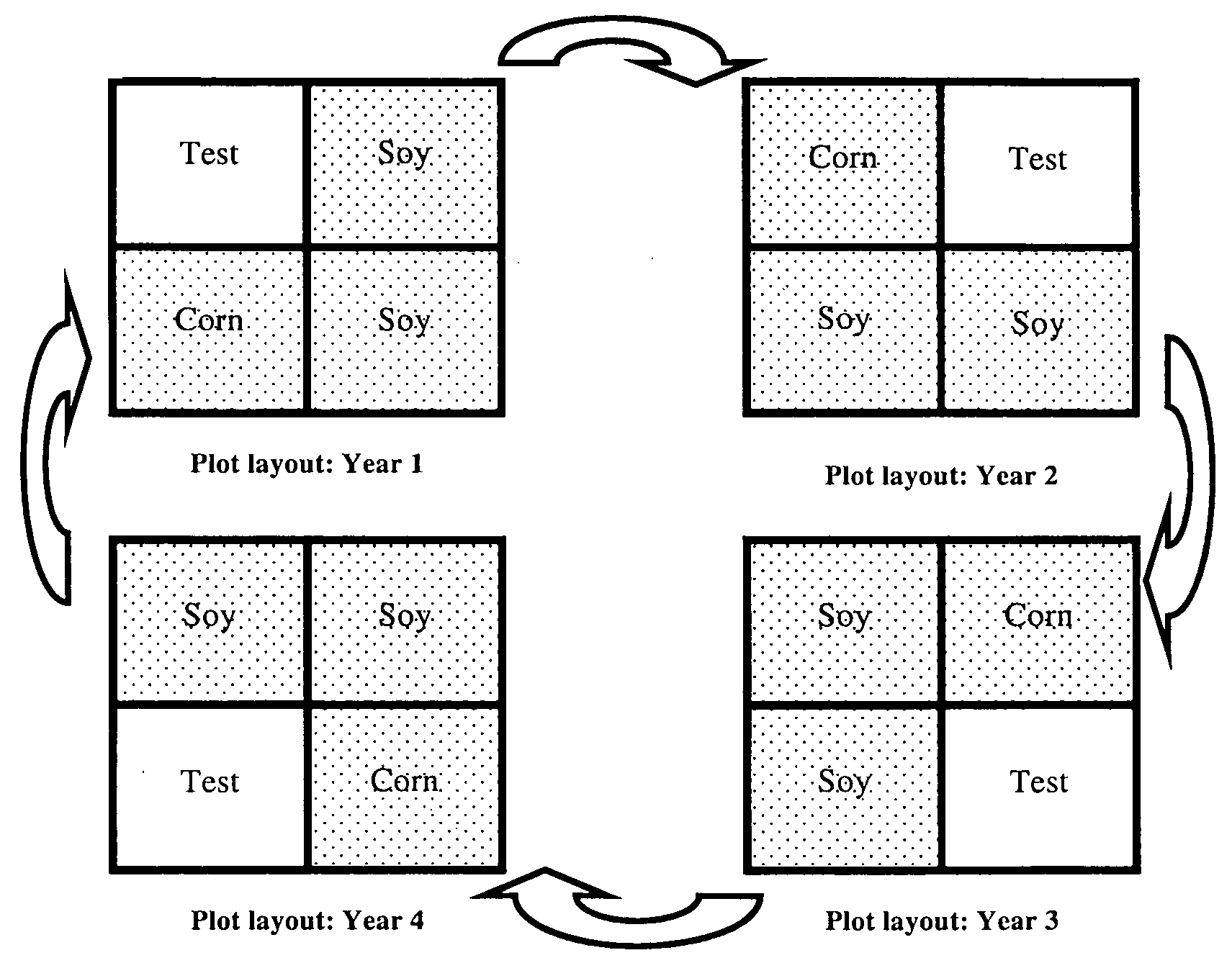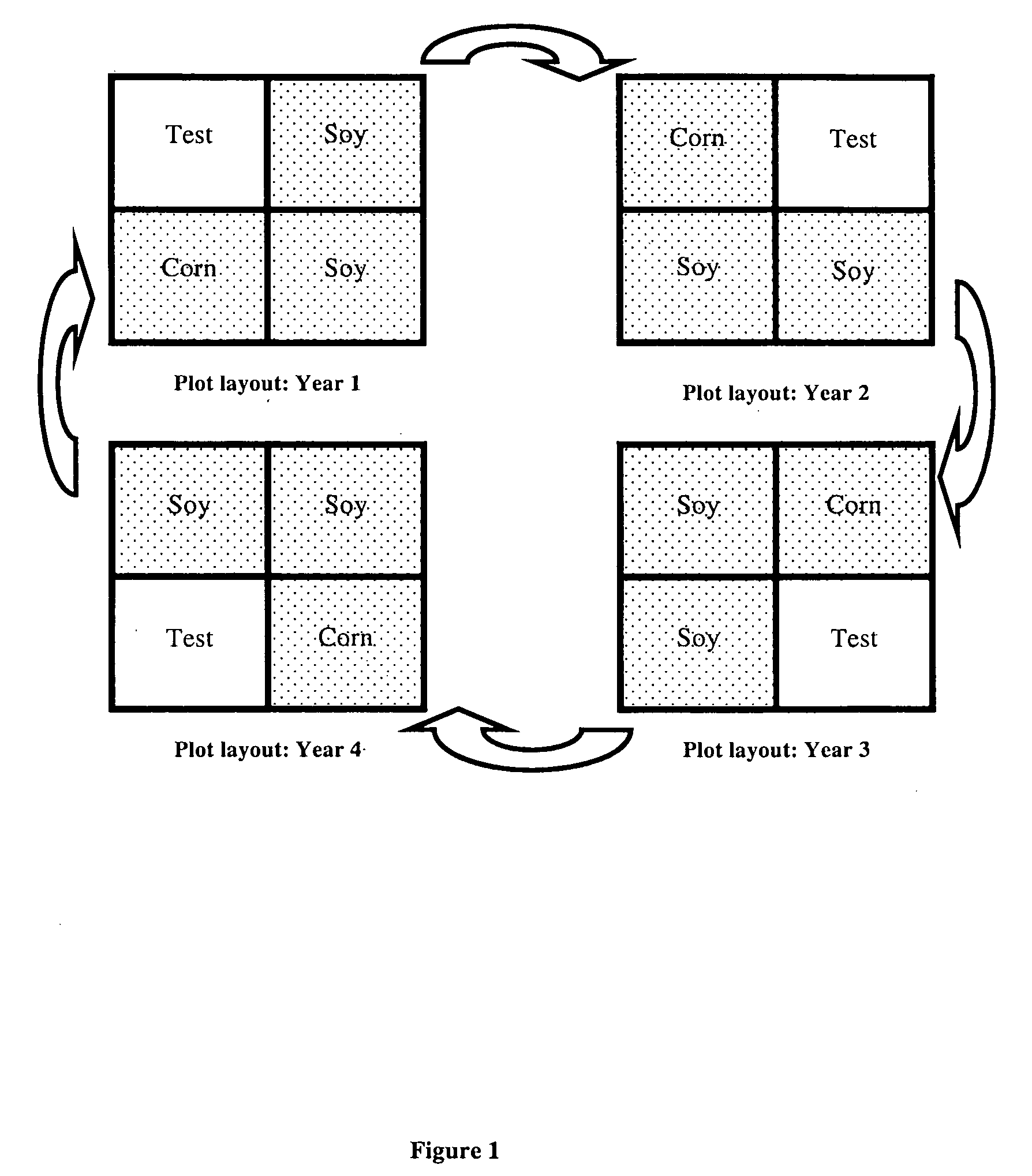Methods and compositions for high yielding soybeans with nematode resistance
- Summary
- Abstract
- Description
- Claims
- Application Information
AI Technical Summary
Benefits of technology
Problems solved by technology
Method used
Image
Examples
example 1
Methods to Evaluate SCN Resistance and Yield
[0137]Soybean lines are evaluated for SCN resistance in the greenhouse based on their response to a given SCN isolate. SCN races are designated as Races 1 to 16 based on 4 differential lines Peking, Pickett, P188788 and PI 90763 with 3 being the most common race. Thus, a given commercial variety is released as resistant or susceptible to any given SCN race or biotype based on the greenhouse assay only. Field populations of SCN are diverse and heterogeneous. It is not uncommon to find many biotypes or races in a small patch in a field and their field distribution is highly heterogeneous. This is one of many difficulties involved in evaluating SCN disease in the field. To date, there is no established methodology for SCN evaluation in the field. A field screening assay was developed to evaluate SCN resistance in conjunction with yield.
[0138]Methods were developed to generate high and low SCN pressure environments and maintain consistent pres...
example 2
Assessing Yield Drag and Gains Utilizing High and Low Infested SCN Field Nurseries
[0142]With continued emphasis on developing and improving defensive traits for the commercial soybean seed program, there has been an increasing need to have field testing for evaluating plant responses to SCN and other nematodes. Field testing may aid in marker development, verification, and testing basic ecological hypotheses for furthering an understanding of the basic biological parameters influencing expression of resistance. Field studies allow large plot sizes, seed increases, differing cultural practices, and natural interactions with other microorganisms and edaphic factors that will be common in the field. Field testing also requires an understanding that plant-parasitic nematodes occur in dynamic poly-specific communities that constantly respond to hosts, weather and climate, soil physical properties, other micro-fauna, and micro-flora. Contrasting field nurseries with high and low SCN press...
example 3
Confirming Yield Parity and / or Gains with Forrest-Type SCN Resistance
[0145]A population was developed by crossing MV0046 with MV0045. MV0045 was the source of resistance derived from ‘Forrest’. The progeny were genotyped for the rhg1 haplotypes and presence of Rhg4. The progeny were planted in high infestation and low infestation fields, evaluated for yield and SCN resistance. Progeny plants with rhg1 and Rhg4 from Forrest-type from Peking had higher yield than susceptible varieties cultivated under either high or low SCN pressure, suggesting soybeans with Forrest-type SCN resistance have a yield parity or gain compared to soybeans susceptible to SCN (Table 6; FIG. 4). Under low infestation conditions, soybeans with Forrest-type SCN resistance had 117% yield compared to susceptible soybeans. Under high infestation conditions, soybeans with Forrest-type SCN resistance had 114% yield compared to susceptible soybeans.
TABLE 6SCN resistant soybeans with both Forrest-type rhg1 and Rhg4 ha...
PUM
| Property | Measurement | Unit |
|---|---|---|
| Fraction | aaaaa | aaaaa |
| Pressure | aaaaa | aaaaa |
| Electrical resistance | aaaaa | aaaaa |
Abstract
Description
Claims
Application Information
 Login to View More
Login to View More - R&D
- Intellectual Property
- Life Sciences
- Materials
- Tech Scout
- Unparalleled Data Quality
- Higher Quality Content
- 60% Fewer Hallucinations
Browse by: Latest US Patents, China's latest patents, Technical Efficacy Thesaurus, Application Domain, Technology Topic, Popular Technical Reports.
© 2025 PatSnap. All rights reserved.Legal|Privacy policy|Modern Slavery Act Transparency Statement|Sitemap|About US| Contact US: help@patsnap.com



